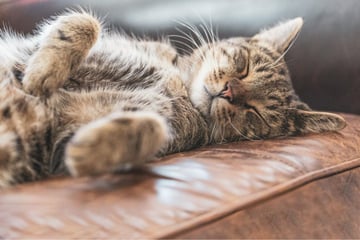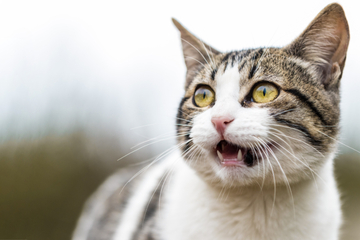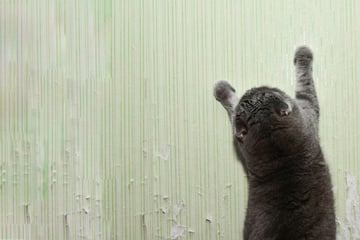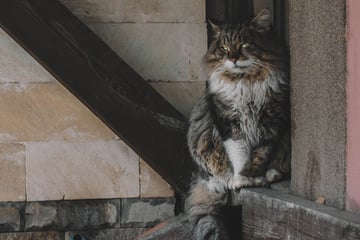Best cat safe houseplants: How to protect your cat
Cats love to nibble on plants, but not all plants are okay for them to nibble on. Which houseplants are safe for cats, and why do they keep munching on those greens?
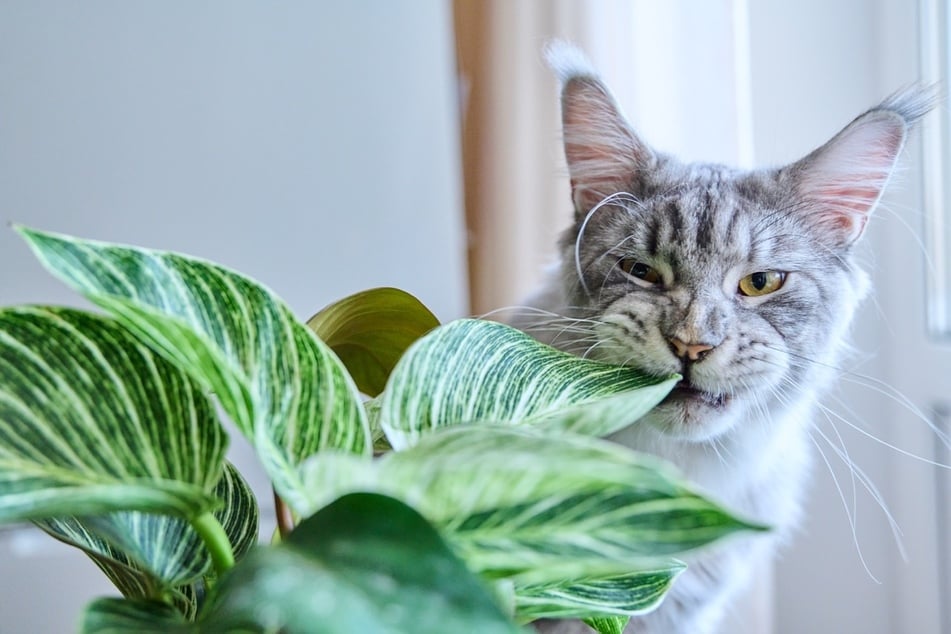
Cats aren't the smartest of all furry friends and certainly won't realize that a plant is toxic before they go munching on it.
It's a bit funny, too, when you consider that cats are also carnivorous animals. So why on Earth are they eating plants?
Well, they seem to have an affinity for it, so here's how you can help keep them safe and healthy.
In this cat guide, TAG24 dives into why cats eat plants as well as what you can do to protect your cat and plants alike.
Which houseplants are cat safe? Let's take a look.
Why does my cat eat plants?
If you've ever noticed that your cat has an odd obsession with houseplants and grass, you've probably asked yourself, "Why?". After all, these cuddly little fellows are predatory carnivores, so what are they doing eating greens? It'll probably surprise you, then, that the answer is simple.
Cats don't eat plants for their nutritional benefits, but rather as an aid to their digestive system. Domestic and wild cats alike will eat houseplants and cat grass to keep their stomachs healthy and help to move fur balls through their system.
The leafy greens that they consume when eating plants actually act to loosen up their insides, which can get clogged with fur from all that grooming. Once this happens they will more easily vomit out the fur, which is very important for their health. If this becomes super common, though, it might be a good idea to go to the vet.
How to keep cats away from plants
If you do have any plants that are perhaps not ideal for your kitty's health, then it might be a good idea to keep them away. That might be a little hard, of course, if the plants are inside - but here are a few tips.
Tip 1: Every cat owner knows how destructive a bored cat can get. Indeed, they'll quickly rip apart wallpaper and furniture if you don't pay enough attention to them. As a result, cat owners should always choose heavy flower pots that are harder to push over.
Tip 2: Try to keep your plants in places where your cat will have trouble reaching them. When your cat gets hyperactive, your plants may become its victim. Keep them elevated and out of reach.
Tip 3: Keep all of your plants on non-slip mats to reduce the possibility that your cat will knock them over.
Tip 4: Make sure to never use toxic fertilizers as they will be absorbed and this will contaminate the water that the plant excretes. Your cat is likely to drink this water, so you need to be careful.
Tip 5: Make sure to offer cat grass around the house. If your cat has access to a healthy and known option such as this, then they may be less likely to nibble on your other plants.
Tip 6: If your friends have a habit of giving you plants as gifts, make sure to let them know about the cat so that they only give you cat-safe houseplants.
Ultimately, the most important preventative measure that you can take is to only buy cat-friendly houseplants, instead of actively trying to control your cat's movements.
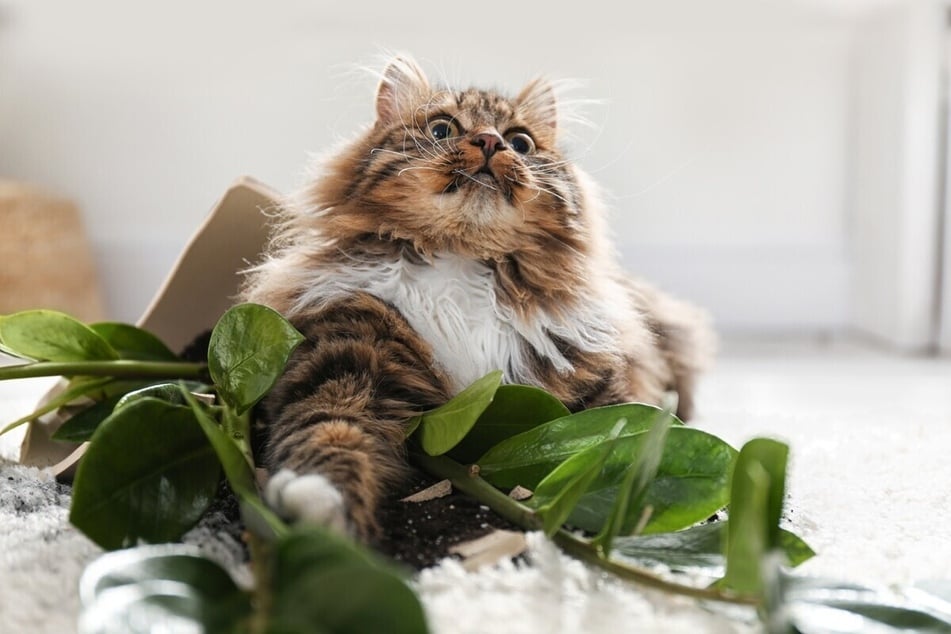
Are there any cat repellent plants?
There are a variety of plants that will keep cats away without being dangerous. These plants can be used to keep your cat away from other plants that are maybe less than ideal for your cat to consume, or from your yard if you want to keep out a neighbor kitty.
Some cat-repellant plants include the following:
- Herb rue
- Orange and lemon (citrus)
- Lavender
- Rosemary
- Lemon thyme
- Oregano
- Spiked plants like cactuses and succulents
There are a variety of different cat-repelling plants, but you need to be careful. Check with your veterinarian and make sure that you are not doing anything that could cause harm.
Top 5 cat safe plants
If you are a cat lover and a plant lover, you have no need to fear. There are plenty of fantastic plant options for cat owners who are concerned for their kitty's safety, and we're here with a few great options.
Here are five fantastic cat-friendly houseplants to check out:
Calathea / Basket Maranthe is a cat safe houseplant
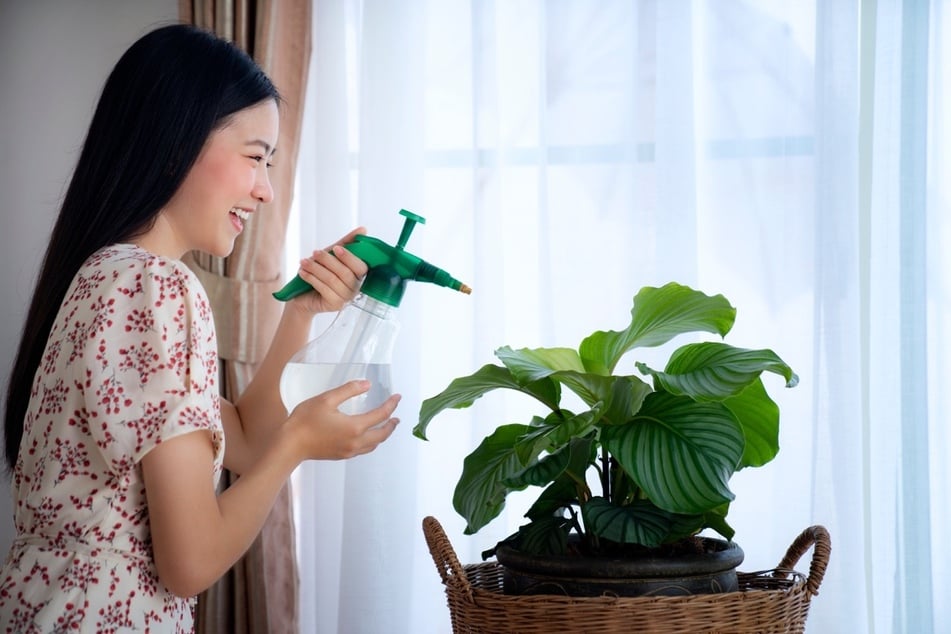
This popular houseplant might be difficult to care for, but it looks great and poses no danger to your beloved kitty. Calatheas generally grow to be about twenty inches high and fifteen inches wide, and often grow little yellow flowers in blooming season.
Keep it in a sunny but semi-shaded location in a room which should always be generally kept between 73°F to 77°F. You will need to make sure that its soil is always a little bit moist and is rich in natural nutrients. Don't let it get too wet, as this can be a death bell for the plant.
Cats will often use Calathea to cleanse their stomachs from fur balls, similar to the way in which they use cat grass. As a result, if they vomit after eating it, don't worry too much.
One cat friendly indoor plant is the penny tree
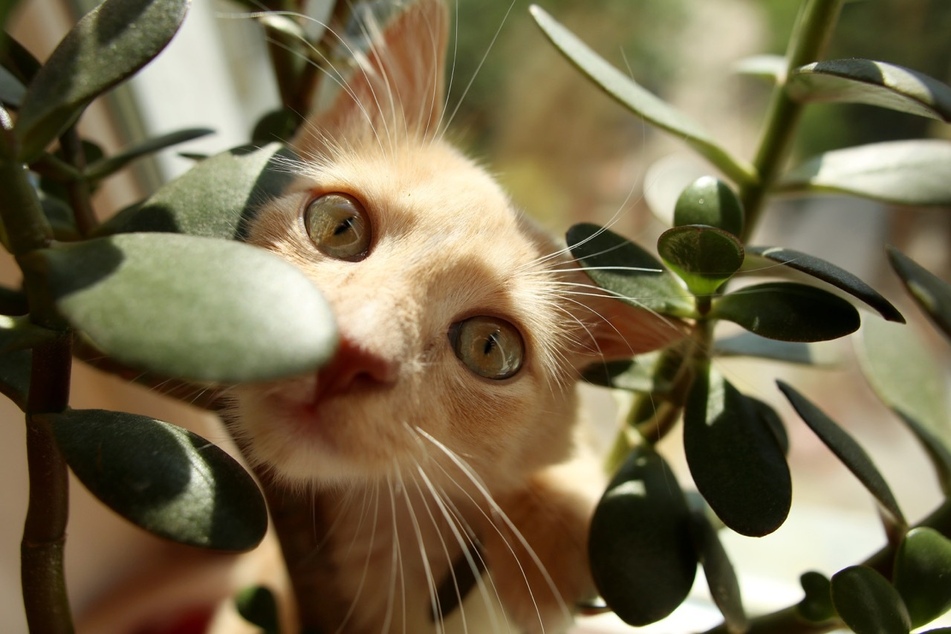
Penny trees aren't only a lucky charm for your house, but also a lucky charm for your cat. The plant is not at all poisonous to cats and is perfectly safe, even if your kitty decides to go munchin'! On top of that, though, owning a penny tree is said to bring great riches to your family.
Growing to about three feet in height, the penny tree should always be kept in a semi-sunny place that also gets periods of shade. The soil should be stony and gravely, but rich in nutrients. Remember that this particular plant is quite sensitive to frost and does not like warm air.
If your cat commonly nibbles upon your penny tree, try not to get too concerned. If it is constant, though, get your cat checked at the vet and look after the plant... it might have some missing leaves!
Try the golden fruit or areca palm
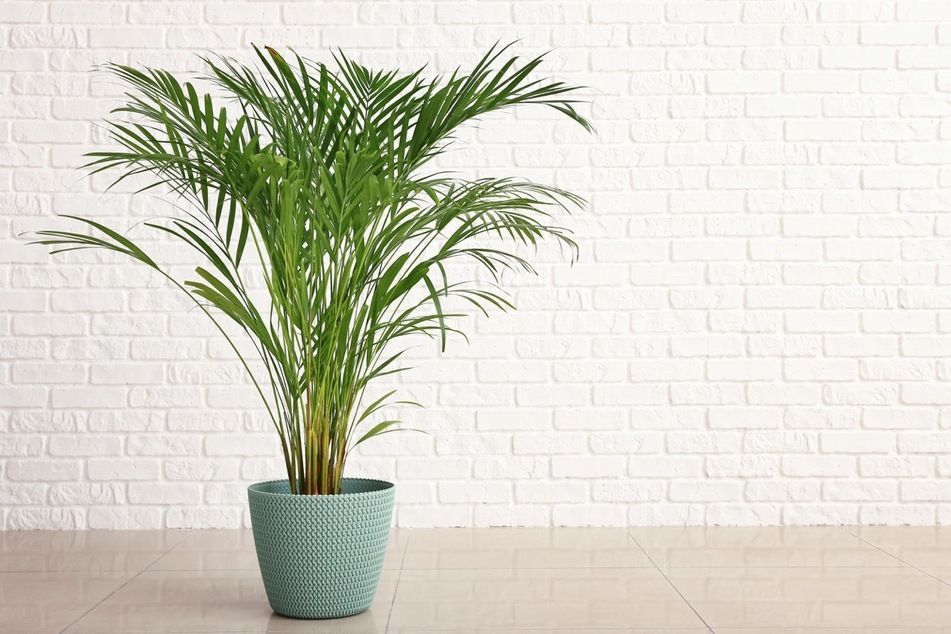
The Areca or Golden Fruit palm is suitable for cats, and is a pretty elegant addition to your home, as well. Perfect for those of us who desire larger cat-friendly houseplants, this fine fellow can grow up to 10 feet high and cast green shadows across your house or apartment.
Make sure that it has sandy soil that is rich in nutrients and is always kept a little bit moist (but never waterlogged). Keep these palms placed in partial shade and always protected from frost. It is best to keep them at a consistent temperature of around 68 °F.
Cats are rather disinterested in Golden Fruit Palms, making it more-or-less a completely safe plant. The fronts are indigestible for cats, but not poisonous, so be aware if you witness munching.
Bromeliads are great indoor cat plants
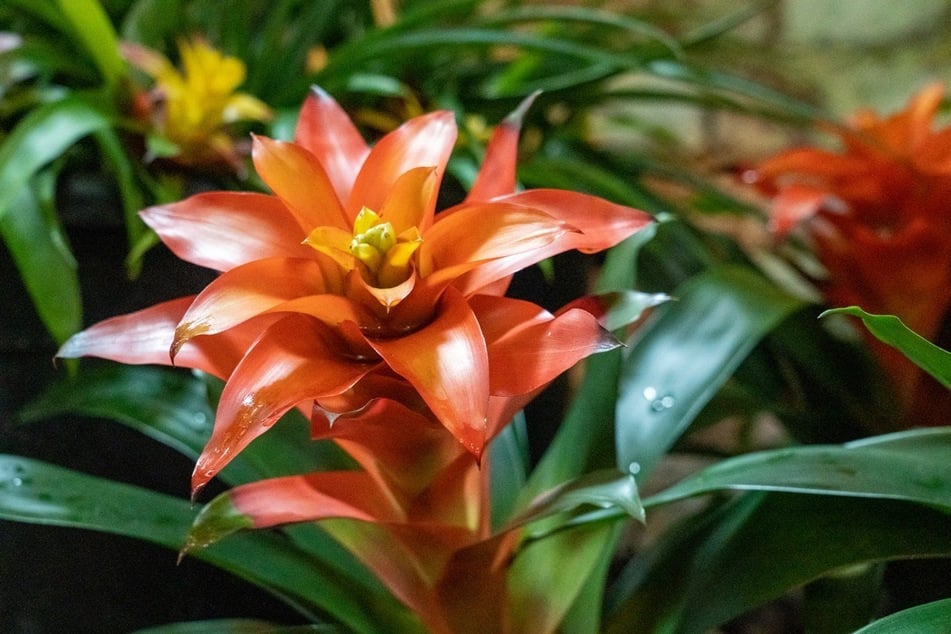
Bromeliads are perfect if you want to add a splash of color to the greenery of your indoor abode. It's safe for cats, is colorful and pretty, and relatively easy to look after. If you want some variety, there are a ton of different types. Honestly, what's not to love?
They grow to all different heights and weights, and should be generally kept in pretty sunny locations. Bromeliads often like relatively moist, but nutrient-poor sandy soil. If you want a plant in your more regularly heated rooms, then this is the one to get.
The only real concern with Bromeliads is that quite a few of them have relatively sharp leaves. Still, it is completely safe for your cat, but there is a small risk that they may cut themselves.
Cat friendly houseplants like the Christmas cactus are perfect
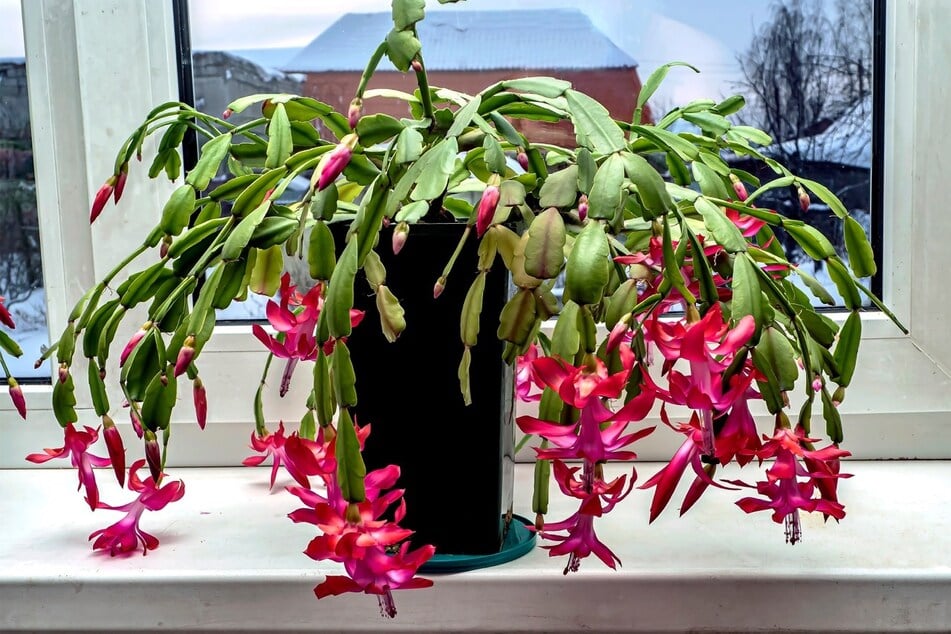
The Christmas Cactus is an insanely pretty non-toxic and cat-friendly indoor plant. If you crave a colorful bloom during winter, then this is the potted plant for you! That blooming generally takes place between November and January.
Often growing up to 15–16 inches in height, the Christmas Cactus must be kept in a sunny spot and always protected from frost. They don't like direct sunlight all the time, though, so keep it a little bit shaded. Keep the sandy soil moist, nutrient rich, and low in lime.
Despite being perfectly cat-friendly, cats can get a little bit of a tummy ache from the over-consumption of Christmas Cactus, so it's best to monitor how regularly they nibble on it.
Other cat safe indoor plants
We're only discussing five houseplants that are safe for cats, but in reality, there are hundreds. We'll list a number of those here, but it's best to check with a vet before bringing one of these bad boys home. When in doubt: go with cat-nip or cat grass!
Here are a few other cat-friendly houseplants:
- Bamboo
- Canary Island date palm
- Thick leaf
- Echeveria
- Maidenhair fern
- Gardenia
- Staghorn fern
- Geranium
- Green lily
- Hibiscus
- Piggyback plant
- Kentia palm
- Coconut palm
- Millbeckia
- Wax flower (Porcelain flower)
- Slipper flower
- Pubic flower
- Cobbler palm
- Stick palm (rod palm)
- Sycamore maple
- Room jasmine
- Room fir
- Lemon tree
- Cyprus grass
Certain herbs are actually relatively disliked by cats (though generally not toxic), so it can be hard to choose which ones to grow in your kitchen. Again, don't be too concerned – there are still a few options.
A few cat-friendly kitchen herbs include:
- Basil
- Dill
- Chamomile
- Melissa
- Mint
- Sage
- Thyme
Please keep in mind: These lists are not exhaustive, and could include plants that your specific cat may have intolerances to. You must check with a veterinarian about potential issues, and they should be able to give you a more thorough list of cat-safe plants and herbs.
You don't need to worry too much about cat safe plants
There is often a lot of worry surrounding cats that are consuming large quantities of houseplants, and this concern is well-founded. Not only can certain plants poison your cat (or just simply upset their stomachs), but the consumption of greens can indicate that your feline friend is unwell in some other way.
All that being said, there's no need to stress if you see your cat munching on a potted plant. It's completely normal and instinctive, and more often than not will have no negative consequences. If you are concerned, though, then (as always) take your feline friend to the veterinarian.
Cover photo: 123rf / Photolight2

